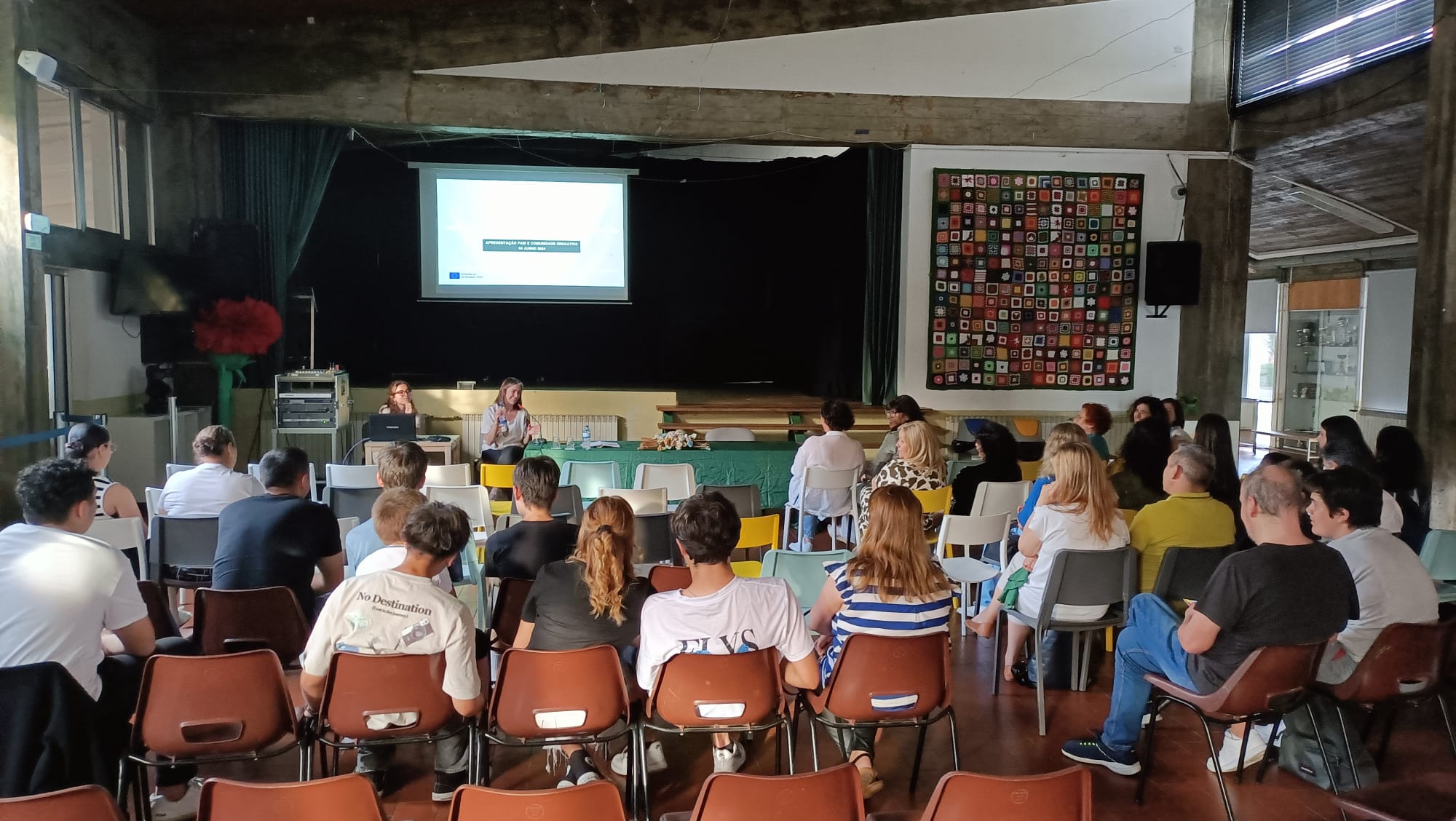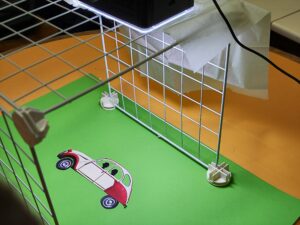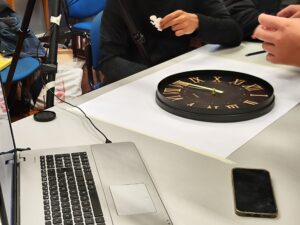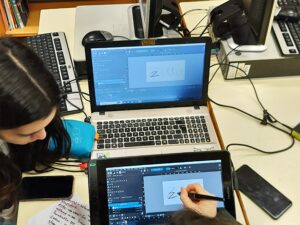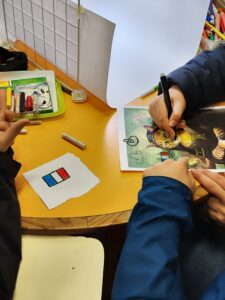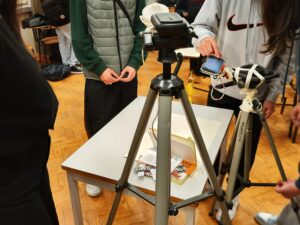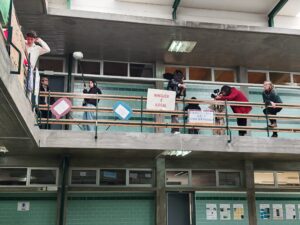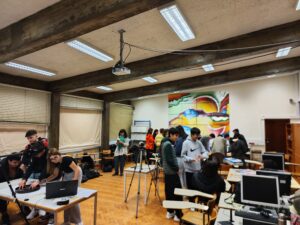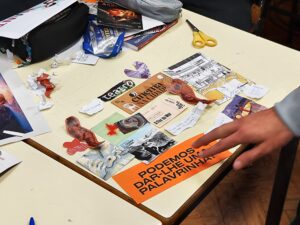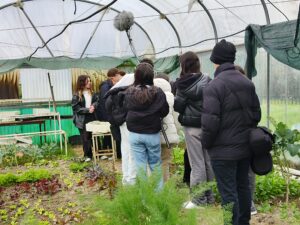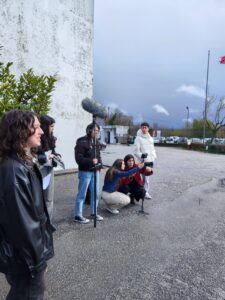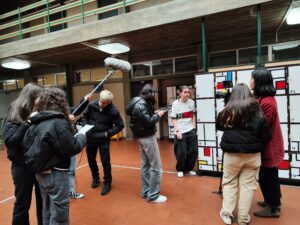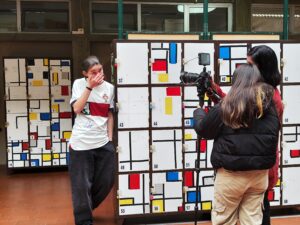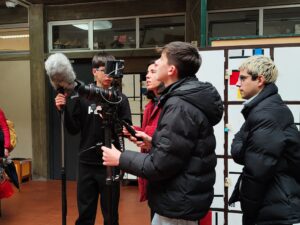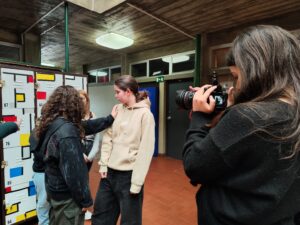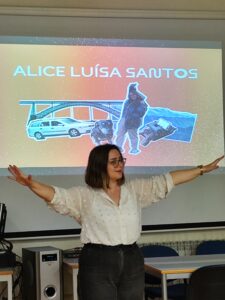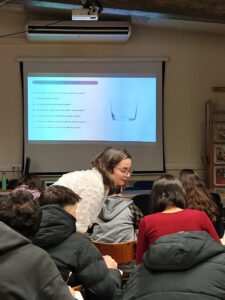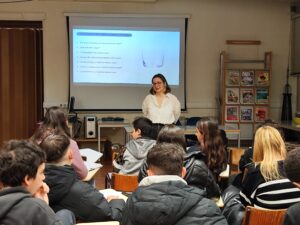For the Mediascapes project, between January and March 2024 partner Cine Clube de Viseu conducted a series of workshops themed Transmedia Storytelling in the Escola Secundária Viriato (in Viseu).
From practicing storytelling to editing the material produced, through the various workshops the participating students were able to create transmedia narrative products that were created and shared through different media.
STORIES FROM THE CINE CLUBE DE VISEU WORKSHOPS
Storytelling
The first workshop meetings allowed participants to get in touch with the practice of storytelling. Guided by Alice Santos, Carla Augusto and Mariana Duarte, they were able to devote themselves to developing their creative thinking, acquiring strategies and creative processes useful for constructing a story with themes close to their own cultural universe and interests, even touching on important issues such as bullying and interculturalism. Exploring the endless narrative possibilities offered by the use of media, students felt pushed to tell their own stories freely, to listen to the stories of others and to work in groups, thus constructing the story underlying the final product.
Animated cinema and stop motion
Animated cinema and the stop motion technique were the theme of the second block of workshop meetings. With the help of Margarida Pessanha and Graça Gomes, the smartphones, professional equipment, PCs and graphics tablets were the media with which to practice, developing creativity and manual drawing and cropping skills to the fullest and, above all, acquiring the basics of combining animation with the final transmedia narrative.
Sound design and filming
For the completion of an audiovisual product, one cannot miss the workshop meetings dedicated to sound design and video filming. Students, with the mentoring of José Pedro Pinto, were guided through the impact of sound in films and in to the recording and post-production phases of dialogues, ambient sounds and music, freely choosing the space inside and outside the school most suitable for their scene, and then tried their hand at filming. With the guidance of Inês Alves, all the participants experimented with the use of cameras, sound, clapperboard, secretarial work and actorly expression: the youngs felt spurred to get involved themselves, working as actors and as camera operators, strictly adhering to the techniques they had learned and critically reasoning about the emotional manipulation that music can perform on images.
Thanks to the final support of Inês Alves, José Pedro Pinto, Carla Augusto, Mariana Duarte and a basic approach to editing a few clips, both participating classes were able to complete the realization of an audiovisual product, encountering the challenges inherent in this creative process and understanding firsthand what lies behind it. Collaboration among students, classes, teachers, trainers and coordinators was the key to success.
COMMENTS FROM CARLA AUGUSTO
What was it that impressed you the most?
“On the one hand, the school organization, with all its disciplines, programs and schedules, which define and shape the life and time of students, the nature of their learning experiences, relationships and participation. The entry of creative entities and projects from outside the school allows us to validate another way of being at school. When students are part of creative processes they are more free to participate in a more autonomous and critical way, driven by a personal and authentic interest, experiencing a register different from the existing right and wrong, a register of search, conversation, rehearsal, attempts, satisfaction , criticism, recognition.
Therefore, the pragmatism of the young students in the way they participated in the different activities was very clear about what they think these creative proposals should be: they should not be the same as classroom activities, they should offer practical experiences, they should have the necessary time ( which should come from the curriculum and not from their free time), they must allow each person to find their own way of participating, they must allow reflection on individual and project paths and results.
I was very impressed by the school that appears in the final film: an ethereal space and luminous students.”
In your opinion, what did the kids like most or what worked best?
“Having attended all the workshops, I would say that what they liked most was DOING, using equipment, trying new techniques, working alone but being accompanied and seeing concrete results. That’s why they really enjoyed doing animation, recording and editing sound and filming. Above all, filming, being in front of and behind the camera.”














 Also in Viseu, Portugal, among the classes of the Escola Secundaria Viriato, two days were dedicated to a restitution activity to present the results obtained after months of fruitful training sessions. The first session was a meeting between participating students, teachers and expert trainers, in which they had the opportunity to talk about the activities carried out and to critically evaluate together the results of the Medascapes‘ workshops.
Also in Viseu, Portugal, among the classes of the Escola Secundaria Viriato, two days were dedicated to a restitution activity to present the results obtained after months of fruitful training sessions. The first session was a meeting between participating students, teachers and expert trainers, in which they had the opportunity to talk about the activities carried out and to critically evaluate together the results of the Medascapes‘ workshops. 
